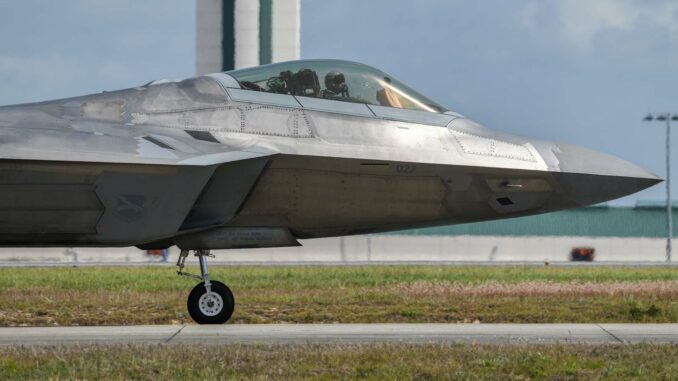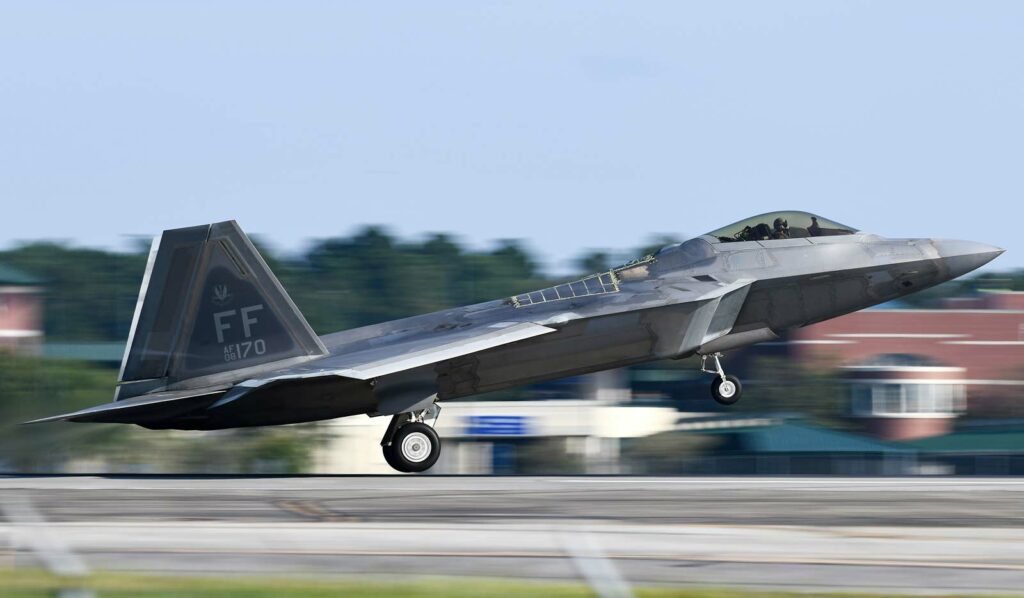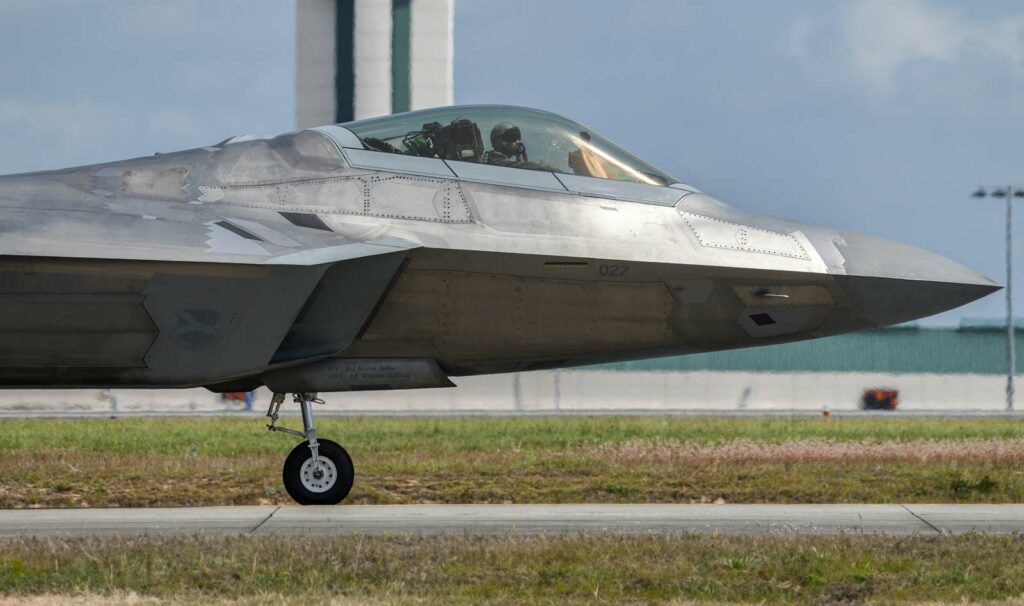
The US Air Force is investing heavily in the modernization of the F-22 Raptor, with new technologies to meet growing threats, despite limitations.
The US Air Force’s decision to invest around $8 billion in modernizing the F-22 Raptor reflects a strategic adaptation in the face of evolving global threats. The main aim of this initiative is to ensure that the F-22, despite its origins in 1980s and 1990s technologies, remains competitive with fifth-generation fighters such as the Chinese J-20 and the Russian Su-57. These investments cover several critical areas, including stealth, sensoriality and communication systems.

Stealth and operational capability
The new stealth fuel tanks are a major step forward. They increase the F-22’s range without compromising its stealth, a key asset against modern air defense systems. Stealth in military aviation is not just a matter of not being detected by radar, but also of reducing thermal and electromagnetic signatures. These special fuel tanks help to keep the aircraft “invisible” during penetration missions into enemy territory.
Enhanced sensors and communication
The integration of Infrared Search & Track (IRST) capability via wing-tip pods significantly enhances the F-22’s detection capabilities. IRST makes it possible to locate and track targets without emitting radar signals, which is crucial to maintaining the element of surprise and tactical advantage. At the same time, upgrades to the control pattern receiver system and modernization of the GPS antennas enhance the F-22’s resilience against jamming and cyber attacks, ensuring reliable communication and navigation in hostile environments.
Selecting aircraft for modernization
The decision to modernize only a portion of the F-22 fleet was based on budgetary and technical constraints. Block 20 aircraft, mainly used for training, will not receive these upgrades due to their incompatibility with the new technologies. This selective approach enables us to concentrate resources on those units most capable of making a significant contribution in-theatre, while paving the way for future integration of the NGAD (Next Generation Air Dominance) program.
Selective Raptor upgrades
Unfortunately, due to high costs and technical specifications, only part of the F-22 fleet will receive these upgrades. The 32 aircraft of the Block 20 version, used mainly for training, are excluded from this modernization program due to their incompatibility with the latest technologies and weapons. This decision raises questions about the future of these jets, and about value for money within the US Air Force.

Implications for the future of air superiority
This modernization reflects the US Air Force’s need to maintain a technological edge against increasingly competitive adversaries. The F-22 upgrades, although limited to a portion of the fleet, are a step towards preparing for Next Generation Air Dominance (NGAD), an ambitious program to develop next-generation combat aircraft working in concert with autonomous drones. This investment in the F-22 demonstrates the United States’ determination to maintain its leadership in the air, while paving the way for future innovations.
War Wings Daily is an independant magazine.